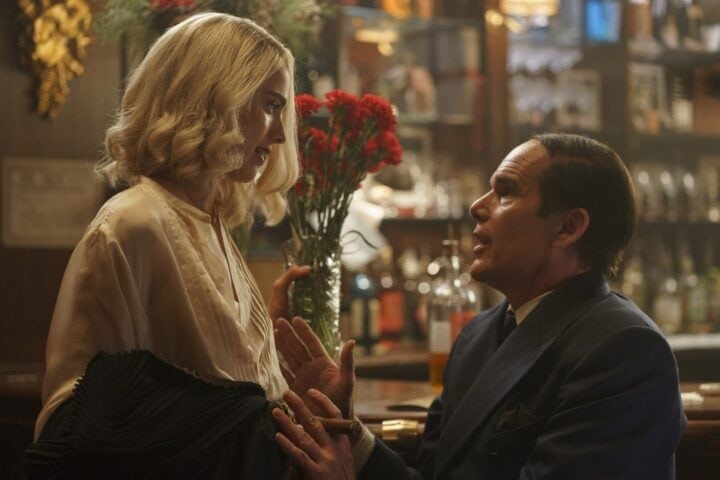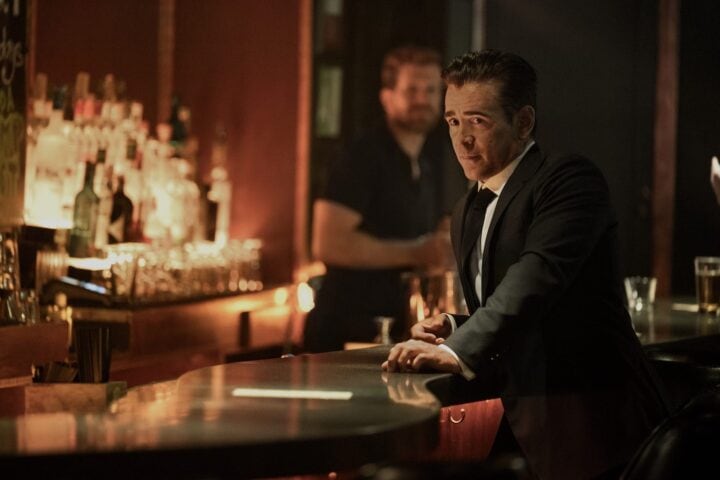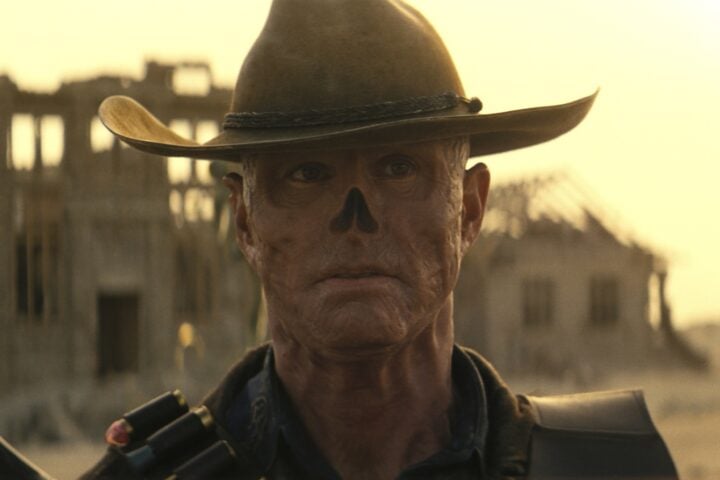Twenty-five years after Anthony Minghella’s The Talented Mr. Ripley comes a slower, moodier adaptation of Patricia Highsmith’s 1955 novel. Netflix’s eight-part series, written and directed by Steven Zaillian and shot in stark black and white, stars Andrew Scott as the titular career criminal who, funded by wealthy shipping businessman Herbert Greenleaf (Kenneth Lonergan), travels to southern Italy to bring Greenleaf’s son, Dickie (Johnny Flynn), back to New York.
After arriving in the incredibly picturesque town of Atrani, where he finds Dickie living the high life with his girlfriend, Marge Sherwood (Dakota Fanning), Ripley quickly changes tack. He wins Dickie’s trust and embeds himself firmly in his life, but in the process rouses the suspicion of both Marge and Dickie’s friend Freddie Miles (Eliot Sumner).
While Ripley initially follows the same narrative beats as Minghella’s film, there are notable differences. For one, Scott’s Ripley is older and more weather-beaten than Matt Damon’s boyish interloper. More time is dedicated to his history as a petty criminal in New York before he arrives in Italy, and he carries himself as a confident practitioner of the art of subterfuge.
More notably, Ripley doesn’t lean into the sexual ambiguity of Ripley’s jealousy of and infatuation with Dickie. Multiple characters speculate about Ripley’s sexuality, but aside from one longing glance at a photograph, Scott’s portrayal of Ripley is steely and conspicuously asexual. This, while more faithful to Highsmith’s novel, lacks the lurid complexity that partially explains the film’s cult appeal. The result is a more straightforward, though still consistently gripping, depiction of a man cynically plotting his way to money and status.
The logistical details of the predicament in which Ripley eventually finds himself are pored over in meticulous detail. Long sequences, without dialogue, show him writing and posting letters, practicing fake signatures, traipsing up and down staircases, getting in and out of taxis, and packing and repacking his possessions. This is all surprisingly captivating, intercut with cinematographer Robert Elswit’s strikingly angular shots of often-deserted Italian cities.
The series repeatedly references the Catholic iconography of Renaissance art, with which Ripley becomes obsessed. He inherits from Dickie a particular fascination with the work of Caravaggio, whose famous painting of David holding the severed head of Goliath—in which the faces of the two biblical figures resemble younger and older versions of the Italian painter himself—serves as an eerie metaphor for Ripley’s own relationship with Dickie.
While its subtext may be less layered than that of the 1999 film, the series manages to sustain tension despite its languid pace. Ripley boasts an eerie atmosphere, stunning cinematography, and a thoughtful commentary on the relationship between life and art that’s distinctly its own.
Since 2001, we've brought you uncompromising, candid takes on the world of film, music, television, video games, theater, and more. Independently owned and operated publications like Slant have been hit hard in recent years, but we’re committed to keeping our content free and accessible—meaning no paywalls or fees.
If you like what we do, please consider subscribing to our Patreon or making a donation.





